
Recent housing finance figures from the Australian Bureau of Statistics (ABS) has revealed ongoing weakness in mortgage demand from first home buyers (FHBs), but strong demand from both investors and upgraders (see next chart).
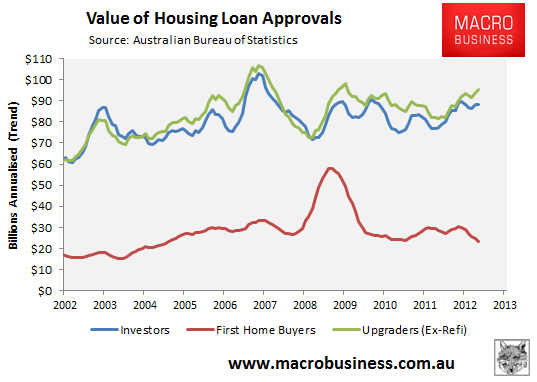
While the number of FHB mortgage commitments rose by 5% in April following March’s 12% rise, they were down by 2% over the past year and were 28% below the 5-year moving average (5YMA):
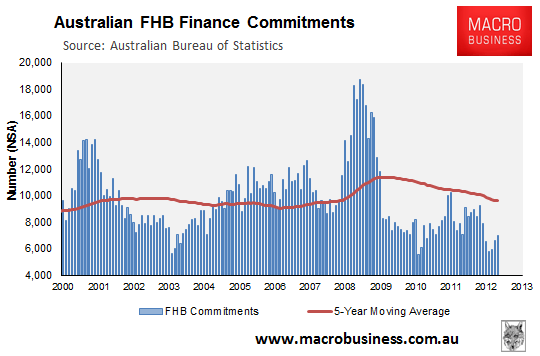
Despite the lift in actual numbers, the proportion of total owner-occupied loans going to FHBs was 14.3% in May, which was only marginally above March’s 14.2% share and the second the lowest reading since June-2004 (see next chart).
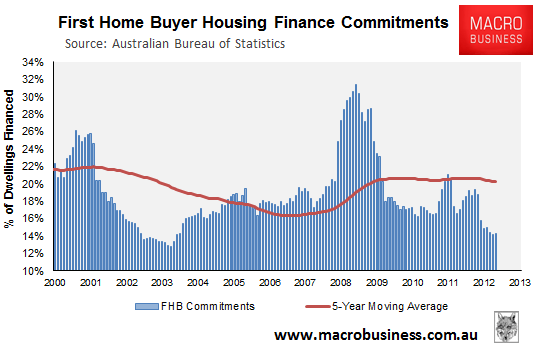
While the recent overall slump in FHB mortgage demand was driven by New South Wales and Queensland, where the number of FHB mortgage commitments hit record lows in January following the removal of FHB grants on pre-existing dwellings in October 2012, both markets have since posted partial recoveries in FHB Demand. FHB demand is also recovering in Victoria following a recent slump (following removal of FHB subsidies on newly constructed dwellings in mid-2012), whereas Western Australian FHB demand has been in a long uptrend (see next chart).
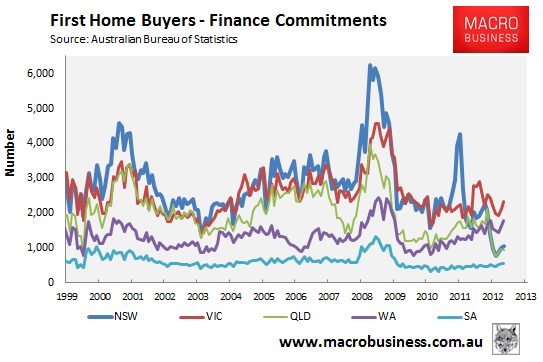
The next chart, which presents the same data on a 3-month moving average (3MMA), shows these trends more clearly:
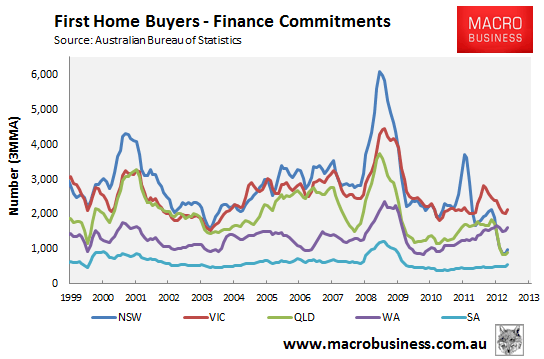
That said, as a percentage of total owner-occupied finance, the number of FHB commitments in New South Wales and Queensland remains in a funk, hitting the lowest level on record in April. By contrast, FHB demand in Perth continues to boom, whereas demand in Victoria also picked-up in April (see next chart).
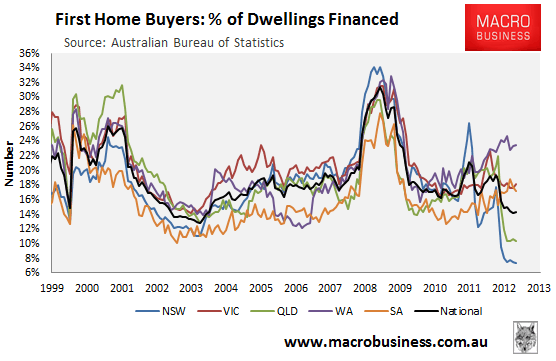
Again, the same data is shown on a 3MMA basis in order to smooth volatility:
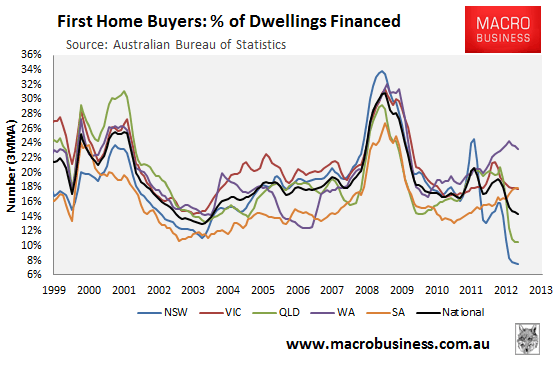
The data suggests that FHB mortgage demand is recovering from January’s lows, but that demand remains weak overall. Looking ahead, we’ll no doubt see a false recovery in Victoria before July as the FHOG shifts from existing to new homes there as well, before collapsing afterwards as occured in New South Wales and Queensland post-October 2012. Similar phenomenom are likely to be in play in both Canberra and Tasmania, where similar changes to the FHOG have been announced, although their small size is unlikely to materially affect the national figures.
Over the longer term, the weak FHB share presents potential headaches for policy makers, who could come under pressure to arrest the slide in FHB demand and re-institute subsidies under the false pretense of improving housing affordability. To their credit, policy makers have to date resisted such pressures, favouring reforms aimed at boosting housing construction and housing supply. With any luck, they will continue down this path.

